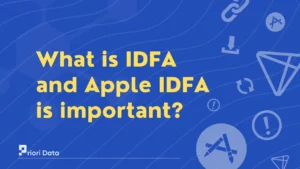An impression refers to when an ad is loaded and displayed. It means the ad was successfully served to a user’s device or app.
For example, one ad being shown on one person’s phone equals one impression. If an ad gets displayed 100 times, that counts as 100 impressions.
Impressions are a key metric used to measure ad reach and campaign delivery. The more impressions, the more widely an ad and its message are seen.
Impressions Vs Clicks
1. Impressions indicate ad reach – Impressions measure how often an ad is served or displayed. It shows the potential number of people who may have seen the ad.
2. Clicks indicate ad engagement – Clicks track how often users actively interact with the ad, like tapping for more info or installing an app. It shows how many people took action on the ad.
3. High impressions + high clicks = campaign success – An ad with high impressions (wide reach) and high clicks (strong engagement) is ideal. This suggests the ad resonated broadly with audiences and drove action.
4. High impressions, low clicks = lack of engagement – A high impressions but low clicks ratio usually indicates the ad failed to capture user attention and spur action, despite broad exposure.
5. High clicks, low impressions = strong niche resonance – An ad with high clicks against low impressions likely strongly resonated with a smaller, more targeted segment of the audience. It drove action from those it reached.
Analyzing impressions and clicks together provides a complete view of an ad’s performance and ability to both reach and engage audiences. Tracking both metrics helps optimize ads for greater success.
Why are impressions important?
Here are some key reasons measuring impressions matters for app marketers:
- Reach – Impressions measure the potential eyeballs on an app ad. Even if users don’t click, wide impressions spread brand awareness.
- Frequency – Analyzing impressions over time shows how consistently an ad campaign achieves visibility.
- Engagement – Comparing impressions to clicks measures engagement rates and helps identify well-performing placements and creatives.
- Delivery – Impressions help verify campaigns are serving correctly through the right publishers and channels as planned and budgeted.
- Optimization – Monitoring impression volumes enables optimizing campaigns for better reach, visibility, and frequency.
F.A.Q
Q1: Are impressions the same as likes?
A1: Impressions refer to the number of times your content is displayed to the users whereas likes imply the number of times the user interacted with your content.
Q2: What is an example of an impression?
A2: An ad is displayed 300 times to the user, which counts as 300 impressions.
Q3: What is the difference between Impressions and views?
A3: Impression means the number of times the content is shown to the user whereas views implies the number of times your content or videos has been viewed by the user.
Q4: What are Impressions vs clicks?
A4: In an impression, the customer only sees an advertisement when in a click, the user engages with the ad and actually follows through it by clicking on the ad.






